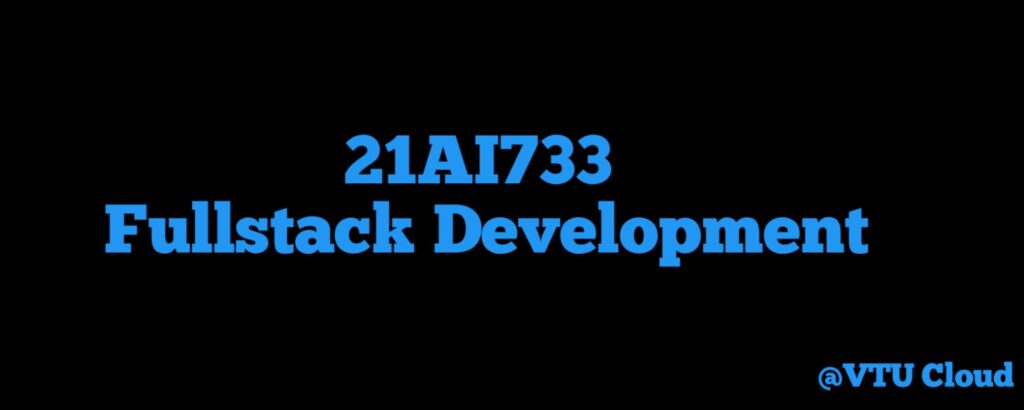21AI733 Fullstack Development

Course Learning Objectives
CLO 1.Explain the use of learning full stack web development.
CLO 2.Make use of rapid application development in the design of responsive web pages.
CLO 3.Illustrate Models, Views and Templates with their connectivity in Django for full stack web
development.
CLO 4.Demonstrate the use of state management and admin interfaces automation in Django.
CLO 5.Design and implement Django apps containing dynamic pages with SQL databases.
SYLLABUS COPY
MODULE - 1
MVC based Web Designing Web framework, MVC Design Pattern, Django Evolution, Views, Mapping URL to Views, Working of Django URL Confs and Loose Coupling, Errors in Django, Wild Card patterns in URLS.
MODULE - 2
Django Templates and Models Template System Basics, Using Django Template System, Basic Template Tags and Filters, MVT Development Pattern, Template Loading, Template Inheritance, MVT Development Pattern. Configuring Databases, Defining and Implementing Models, Basic Data Access, Adding Model String Representations, Inserting/Updating data, Selecting and deleting objects, Schema Evolution
MODULE - 3
Django Admin Interfaces and Model Forms Activating Admin Interfaces, Using Admin Interfaces, Customizing Admin Interfaces, Reasons to use Admin Interfaces. Form Processing, Creating Feedback forms, Form submissions, custom validation, creating Model Forms, URLConf Ticks, Including Other URLConfs.
MODULE - 4
Generic Views and Django State Persistence Using Generic Views, Generic Views of Objects, Extending Generic Views of objects, Extending Generic Views. MIME Types, Generating Non-HTML contents like CSV and PDF, Syndication Feed Framework, Sitemap framework, Cookies, Sessions, Users and Authentication.
MODULE - 5
jQuery and AJAX Integration in Django Ajax Solution, Java Script, XHTMLHttpRequest and Response, HTML, CSS, JSON, iFrames, Settings of Java Script in Django, jQuery and Basic AJAX, jQuery AJAX Facilities, Using jQuery UI Autocomplete in Django
Course outcome
At the end of the course the student will be able to:
CO 1. Understand the working of MVT based full stack web development with Django.
CO 2. Designing of Models and Forms for rapid development of web pages.
CO 3. Analyze the role of Template Inheritance and Generic views for developing full stack web
applications.
CO 4. Apply the Django framework libraries to render nonHTML contents like CSV and PDF.
CO 5. Perform jQuery based AJAX integration to Django Apps to build responsive full stack web
applications,
Suggested Learning Resources
Textbooks 1. Adrian Holovaty, Jacob Kaplan Moss, The Definitive Guide to Django: Web Development Done Right, Second Edition, Springer-Verlag Berlin and Heidelberg GmbH & Co. KG Publishers, 2009 2. Jonathan Hayward, Django Java Script Integration: AJAX and jQuery, First Edition, Pack Publishing, 2011 Reference Books 1. Aidas Bendroraitis, Jake Kronika, Django 3 Web Development Cookbook, Fourth Edition, Packt Publishing, 2020 2. William Vincent, Django for Beginners: Build websites with Python and Django, First Edition, Amazon Digital Services, 2018 3. Antonio Mele, Django3 by Example, 3rd Edition, Pack Publishers, 2020 4. Arun Ravindran, Django Design Patterns and Best Practices, 2nd Edition, Pack Publishers, 2020. 5. Julia Elman, Mark Lavin, Light weight Django, David A. Bell, 1st Edition, Oreily Publications, 2014